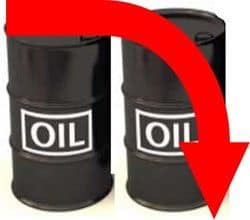Saudi Arabia has slashed the price of oil it sells to the United States, which is clearly a shot at the booming oil shale business that is threatening the waning dominance of OPEC. How long can shale producers in the US survive in an environment with much higher extraction costs? Saudi oil costs pennies to extract – this is not the case in the US.
Saudi Arabia’s moves may have confused analysts, which see the country raising prices to Europe and Asia but offering discounts to the US. There is one thing the US has which the other two markets don’t – massive and growing shale oil production. The evidence is fairly clear.
Crude oil today slumped to a four year low following the Saudi move. Brent crude slipped to close to $82 per barrel during midday trading, while concerns regarding global GDP growth tempered investor sentiment. West Texas Intermediate crude fell 2.8% to $76.58.
Last week, OPEC General Secretary told its members not to panic about falling oil prices, because the slide would smoke out US shale oil producers whose oil extraction costs are far, far greater than for those in the Middle East.
Unless you are a gullible believer in coincidences, today the Saudis pushed further with a price reduction for US oil imports. This is part of a coordinated strategy.
Will US shale oil producers survive OPEC’s attack?
Saudi Arabia says the aim is to maintain market share, but the whole chain of events ties in much more closely with a coordinated onslaught against US domestic shale oil producers.
OPEC aims to stop US oil domance
Saudi Arabia, Kuwait, the United Arab Emirates and some other OPEC members can extract oil at a fraction of what US inland producers have to pay. If oil prices are falling, why not push it further down to destroy those who are on the way to turning the United States into the number one oil exporter globally within the next few years.
Mr. al-Badri assured OPEC members last week that low oil prices will stop non-OPEC producers from earning a profit, they will eventually go broke, shut down, and prices will start shooting up again.
Approximately 40% of all the oil that is pumped out of the ground or under the sea today comes from OPEC members, which are Venezuela, United Arab Emirates, Saudi Arabia, Qatar, Nigeria, Libya, Kuwait, Iraq, Iran, Ecuador, Angola and Algeria.
If oil prices stay below $80 per barrel the shale energy producers will gradually suffocate, OPEC believes. In a war of attrition, there is no doubt who would win, it would be the region with the widest margin – OPEC. In fact, the Saudi’s would still make a profit if oil prices dropped $10, $20 or $30 dollars more.
Just a week ago there was talk of OPEC reducing supply to raise the price of oil. It is very likely that the opposite will happen. Either supply will rise or OPEC will start offering greater discounts than the one Saudi Arabia gave the US today.
OPEC’s number one priority at the moment is to stifle its biggest threat since its creation – US oil production. It has one edge over the American shale producers. It will use that to try to put them out of business.
Most OPEC members have another motive to take this all the way – nearly all their income comes from oil, i.e. they have little else to lose.

